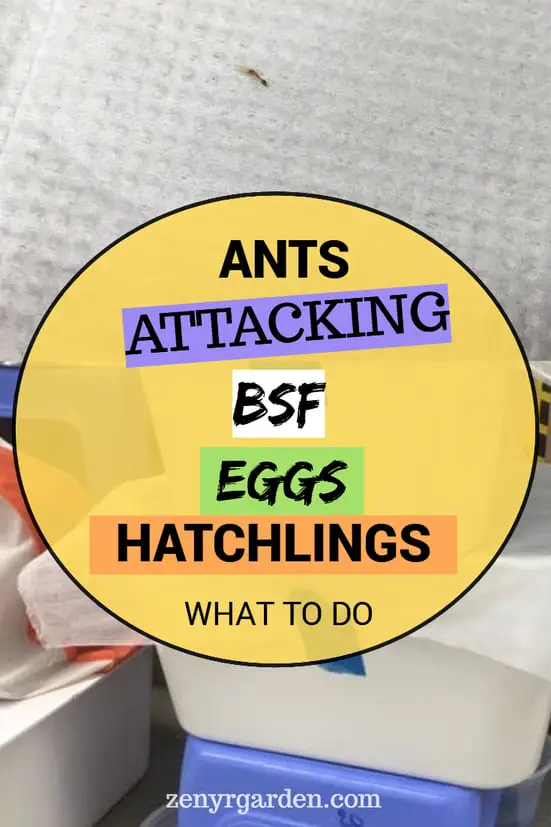I noticed a while ago that some ants were hovering near my little day-old larvae (hatchlings or as one reader called the little larvae in this post neonates). If you're having the same problem, what you can do is try:
#1. Use Ant-Deterrents
Some deterrents you can use are:
- Black oil, kerosene oil, neem oil
- Chalk, diatomaceous earth
- Soap water (also oil-based)
These stuff will keep ants and other insects away from your BSF newborns because of their strong smell.
You can use a cotton swab to dab in the oil and dab it around your BSF growing area. If you use chalk, you can draw or sprinkle it around on the ground.
Another way you can do is to elevate the egg trays and use a four leg bucket feeding design.
#2. Using Four Buckets
This is what I did:
/four-bucket-ant-station.jpg)
Inside the two containers are the newborns, they're only 3 days old. I elevated the trays on a small chair, then hooked four buckets underneath. Like the shoes for them.
In the buckets is water mixed with kerosene oil. It is very effective from what I've seen. One little ant, unfortunately, dared to move in. It died out of courage.
The smell of this lasted for more than half a day, which is good enough. Because ants don't seem to be very active at night.
Alternatively, you could mix in only water. Ants can't swim when they fall into the water. You could also use some soapy water. It could also deter them from getting up to your beloved neonates.
Way number 3 you can try is:
#3. Using A Cover
This is the cover I'm using for the container:
/cover-for-the-container.jpg)
These are actually those bags that they use to cover ripening fruits from fruit flies. I just grabbed it to use because I needed a breathable cloth to remedy the heat issue for my BSF bins.
Accidentally, I found out later that as these bags are used to prevent insects from disturbing the fruits, may be it could also deter ants.
Thanks to the webbing of the textile, even when some ants do manage to get up they may fall into the cloth, be caught in between the two layers like that of a spider web and get confused to find their way out. I did catch one or two ants this way.
I am glad this could stop other insects (houseflies) from coming inside laying eggs. As unlike BSF, houseflies lay egg directly on the foods.
So this could be use for a double-purpose.
Finally, the good news is:
#4. The BSF Themselves
Ants appear and may disturb your BSF when they are small and unable to fight for themselves.. yet. However, when your BSF grow bigger, stronger and more resilient they will be able to protect themselves.
BSF larvae excrete some sort of enzyme or pheromone when they eat. This scent repel other insects away. So as there is more and more of your larvae growing, the population will develop a shield to protect itself.
This is also tied to a note, that is, start small. Start with a small amount of foods first (just enough for your larvae, not for the mold and not for the ants). A grower was in awe (in a bad way) when she opened her BSF box with lots of foods and instead of larvae she found BILLIONS of ants swirling around. Gosh, how itchy we feel just imagining about it.
So the simple key for us is we can get the BSF population established quite a bit first before other unwanted visitors come. As your BSF colony grows bigger, there will be fewer and fewer ants and houseflies.
Share or pin this post!


